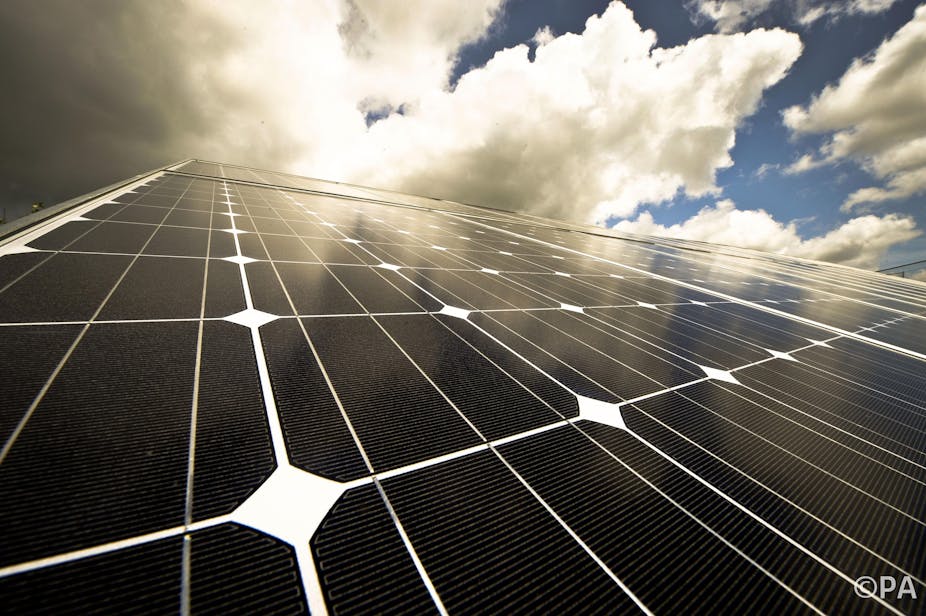Germany, one of the world’s leading users of solar power, is set to charge people generating their own solar-powered electricity for access to the national grid. The move is part of the package of reforms aimed at, among others, driving down the costs of the Energiewender, Germany’s renewable revolution.
At first, this seems an apparently unintuitive step, as it reduces the incentives for new renewable deployments. The proposed reform would require new clean energy installations larger than 10kW – including solar, wind, or other renewables – to pay a portion of the fee to access the electricity grid from which they are currently exempt.
This would make Germany the first EU member state to do so, with similar measures proposed in recession-hit Spain. They are among the only jurisdictions in the world to do so – only a few US states have a similar policy. This fee is already paid by other energy consumers in Germany, incorporated into their electricity bills. Known as the EEG-Umlage, this pays towards the costs of transmission lines and the distribution network that connects electricity consumers to power stations and producers. It amounts to €0.0624 (£0.051, US$0.085) a kilowatt in 2014. A similar charge is levied in other countries at varying rates – it accounts for about 20% of the average UK electricity bill.
What’s controversial is that the charge will be paid per kilowatt generated, whether or not there is any excess to deliver to the network after the business or household has consumed the energy required for their own needs. If 20kw is generated and 20kw used, the fee is still raised against 20kw. It will in effect be a tax on electrical self-sufficiency.
The effect will be that the net subsidised price of electricity paid to renewable energy producers will be less. And from this it is basic economics to assume that a lower price will lead to fewer new installations of renewables, as suggested by renewable trade organisations and environmental groups, and consequently a slowdown in the rate at which Germany reduces its carbon emissions.
Three arguments for taxing self-sufficiency
Is this move justified? Does its financial logic stand up to scrutiny? There is no doubt that being grid-connected is valuable: connected energy producers are able to rely on the grid being able export their electricity if they have a surplus, or import if they are consuming more than they can produce. In either case the network operator bears the costs of ensuring the network is available – whether or not producers are producing.
Another aspect is that as more businesses and households become generators of electricity, and so become exempt from the charge, the costs fall disproportionately on a shrinking pool of non-exempt consumers. This is a positive sign if the government’s objective is to promote renewables, but those not willing or able to do so face ever increasing costs. Taken to its extreme, if every electricity consumer were to become a producer, there would be no non-exempt consumers to pay for the network at all, which is counter-productive.
There is also, importantly, the fact that national electricity grids were largely designed for a few, large power stations. Maintaining grid stability and balancing a network of many thousands of small electricity generators increases complexity and costs. This is especially so when there those generators have little ability to control or predict the amount of energy generated or its timing.
This is commonly called the intermittency problem, and is particularly associated with energy produced by wind and solar power. When the total contribution of intermittent energy sources is low, below 20%-30%, this is a relatively minor, but at higher levels it can become a very significant problem to manage and maintain system stability.
…and one argument against it
But Germany’s proposed fee is based on electricity produced, not electricity transmitted, which is likely to impose a greater cost on the producer than other means of charging. For example, a potentially superior alternative would be to impose a single fee, comprised of a fixed annual charge for network availability, and a charge determined by the volume of electricity drawn from and dispatched to the grid. This would meet the financial costs of maintaining the system, while potentially lowering the costs and reducing the uncertainty of how much would be payable under the new scheme.
The fact is that the costs borne by businesses and consumers to support Germany’s renewable energy subsidies has increased to €24 billion, a cost that naturally poses the question as to whether it is a cost worth paying.

